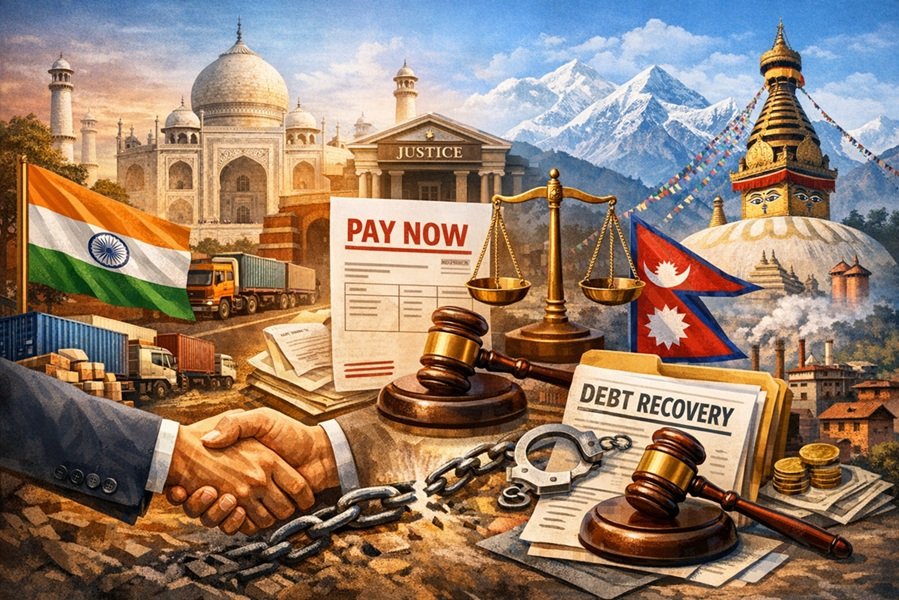
Introduction
Sovereign credit ratings are essential tools used in the global financial system to evaluate the creditworthiness of a country. These ratings influence how much it costs a nation to borrow money, affect investor sentiment, and shape economic policies. In an increasingly interconnected global economy, a sovereign credit rating is not merely a technical term—it is a reflection of a nation’s economic health, political stability, and credibility.
This article will explore the concept of sovereign credit ratings, the major agencies that assign them, their methodologies, the implications of upgrades and downgrades, and real-world examples, with a special focus on India’s sovereign credit rating.
What is a Sovereign Credit Rating?
A sovereign credit rating is an independent assessment of a government’s ability and willingness to meet its debt obligations in full and on time. It reflects the level of risk associated with investing in that country’s debt instruments, such as government bonds.
Sovereign ratings are used by:
- International investors
- Multinational institutions
- Governments and central banks
- Credit default swap traders
These ratings can be long-term (usually associated with bonds of 10 years or more) or short-term, and can be assigned in local currency or foreign currency terms.
Read This: GDP vs. GVA: Understanding the Key Differences in Economic Measurement
Who Assigns Sovereign Credit Ratings?
Three major global credit rating agencies dominate this domain:
1. Standard & Poor’s (S&P)
- Rating scale: AAA (highest) to D (default)
- Example: India holds a BBB- (as of 2024) with a stable outlook
2. Moody’s Investors Service
- Rating scale: Aaa (highest) to C (default)
- Example: India’s rating is Baa3, the lowest investment-grade rating
3. Fitch Ratings
- Rating scale: AAA to D
- Example: India has a BBB- rating from Fitch
Other notable agencies include DBRS Morningstar, Japan Credit Rating Agency (JCR), China Chengxin International (CCXI), and Dagong Global Credit Rating (China).
Why Are Sovereign Credit Ratings Important?
1. Cost of Borrowing
Higher credit ratings mean lower interest rates on sovereign bonds. Lower ratings increase borrowing costs, potentially affecting national budgets and developmental projects.
2. Investor Confidence
Investors rely on these ratings to assess risk. A downgrade can cause capital outflows, weakening the local currency and markets.
3. Access to Capital Markets
A strong sovereign rating can enhance a country’s ability to attract foreign direct investment (FDI) and portfolio investments.
4. Benchmark for Corporates
Many domestic companies’ ratings are capped by the sovereign rating. A higher sovereign rating allows corporates to borrow on better terms globally.
5. International Reputation
A sovereign rating reflects economic governance, political stability, and macroeconomic fundamentals. It impacts a country’s image on the global stage.
Methodology: How Are Sovereign Ratings Determined?
Rating agencies use a mix of quantitative and qualitative factors:
1. Economic Indicators
- GDP growth rate
- Inflation and deflation trends
- Fiscal deficit and current account balance
- External debt and reserves
- Trade performance
2. Political Stability
- Quality of governance
- Rule of law
- Institutional strength
- Geopolitical risks
3. Public Finance
- Government debt-to-GDP ratio
- Tax revenues and spending patterns
- Budget management practices
4. External Environment
- Exposure to global markets
- Commodity dependence (e.g., oil, metals)
- Global financial market volatility
5. Willingness to Pay
- Historical default record
- Policy consistency
- Monetary and exchange rate regimes
Types of Ratings: Investment Grade vs. Speculative Grade
| Grade Type | S&P/Fitch | Moody’s | Description |
|---|---|---|---|
| Investment Grade | AAA to BBB- | Aaa to Baa3 | Low to moderate credit risk |
| Speculative Grade | BB+ to D | Ba1 to C | High credit risk to default |
Investment-grade ratings indicate a relatively safe investment environment, while speculative or “junk” ratings denote high risk and possible default.
Sovereign Credit Rating and Developing Nations
Developing countries like India, Brazil, South Africa, Indonesia, etc., often face the challenge of maintaining or improving their credit ratings despite:
- Political uncertainties
- Social welfare pressures
- Currency fluctuations
- Global interest rate trends (like US Fed hikes)
Critics argue that rating agencies sometimes use Western-centric benchmarks and fail to acknowledge structural reforms and demographic strengths in emerging markets.
Case Study: India’s Sovereign Credit Rating
Current Ratings (as of 2024–2025):
- S&P: BBB- (Stable)
- Moody’s: Baa3 (Stable)
- Fitch: BBB- (Stable)
These ratings put India just above the investment-grade threshold.
Factors Supporting India’s Ratings:
- Strong macroeconomic fundamentals
- Large and diversified economy
- Healthy forex reserves
- Ongoing structural reforms
- Political stability under a majority government
Concerns and Constraints:
- High fiscal deficit
- Public debt nearing 85% of GDP
- Employment and consumption pressures
- Challenges in disinvestment targets
India has often criticized rating agencies for being overly cautious despite reforms such as GST implementation, bankruptcy code, DBT, infrastructure boost, and digital economy growth.
Impacts of Downgrades and Upgrades
Example: COVID-19 Era
During the 2020 pandemic, many countries saw rating downgrades due to:
- Economic contraction
- Higher borrowings
- Revenue shortfalls
India avoided a downgrade to junk, but agencies warned of outlook deterioration.
Example: Greece Crisis (2010–2015)
Greece experienced multiple downgrades to junk status, leading to:
- Bailout requirements
- Austerity measures
- Severe economic contraction
Criticism of Rating Agencies
- Pro-cyclical Behavior: Downgrades in crises often worsen investor panic.
- Lack of Accountability: Agencies were blamed for failing to foresee the 2008 financial crisis.
- Opaque Methodologies: Subjectivity in assigning scores.
- Bias Allegations: Emerging economies claim discrimination and lack of contextual understanding.
This has led to calls for:
- Greater transparency
- Regulation of rating agencies
- Creation of alternative regional or multilateral rating systems (e.g., BRICS rating agency)
Sovereign Credit Default Swap (CDS) Spreads
Credit Default Swaps (CDS) are insurance-like instruments that reflect market perception of credit risk. Higher CDS spreads = higher perceived risk.
For example, if India’s CDS spread widens, even without a formal downgrade, it signals investor concern over debt repayment.
Future Outlook: Digital Economy and Rating Dynamics
As countries move toward digital public infrastructure (DPI), green finance, and decentralized technologies, rating agencies are slowly integrating:
- ESG (Environmental, Social, Governance) metrics
- Cyber risk preparedness
- Digital governance benchmarks
Countries like India are pushing for rating methodologies to better reflect youthful demographics, innovation potential, and digital adoption.
Conclusion
A sovereign credit rating is more than a number—it’s a crucial gauge of a country’s fiscal credibility, political maturity, and economic resilience. While they serve as valuable tools for investors and policymakers, sovereign ratings must evolve to reflect the changing dynamics of global development and financial innovation.
Understanding these ratings helps citizens, investors, and decision-makers appreciate the complex interplay between economics, governance, and global finance. As nations strive for inclusive and sustainable growth, credit ratings will continue to play a pivotal role in shaping access to capital and investment flows.







